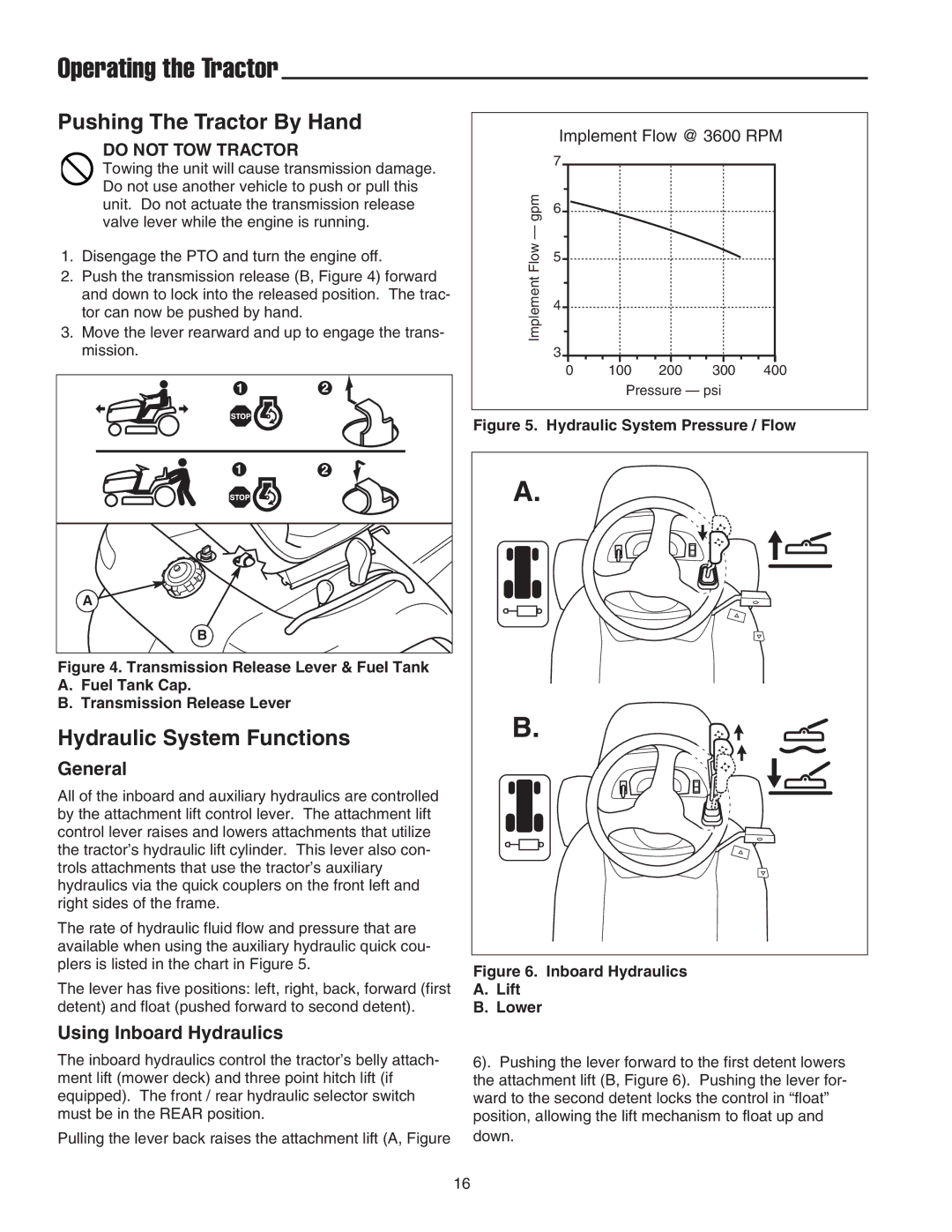
Operating the Tractor
Pushing The Tractor By Hand
DO NOT TOW TRACTOR
Towing the unit will cause transmission damage. Do not use another vehicle to push or pull this unit. Do not actuate the transmission release valve lever while the engine is running.
1.Disengage the PTO and turn the engine off.
2.Push the transmission release (B, Figure 4) forward and down to lock into the released position. The trac- tor can now be pushed by hand.
3.Move the lever rearward and up to engage the trans- mission.
A |
B |
Figure 4. Transmission Release Lever & Fuel Tank
A.Fuel Tank Cap.
B.Transmission Release Lever
Hydraulic System Functions
General
All of the inboard and auxiliary hydraulics are controlled by the attachment lift control lever. The attachment lift control lever raises and lowers attachments that utilize the tractor’s hydraulic lift cylinder. This lever also con- trols attachments that use the tractor’s auxiliary hydraulics via the quick couplers on the front left and right sides of the frame.
The rate of hydraulic fluid flow and pressure that are available when using the auxiliary hydraulic quick cou- plers is listed in the chart in Figure 5.
The lever has five positions: left, right, back, forward (first detent) and float (pushed forward to second detent).
Using Inboard Hydraulics
The inboard hydraulics control the tractor’s belly attach- ment lift (mower deck) and three point hitch lift (if equipped). The front / rear hydraulic selector switch must be in the REAR position.
Pulling the lever back raises the attachment lift (A, Figure
Implement Flow @ 3600 RPM
gpm— | 7 | |
6 | ||
| ||
Flow | 5 | |
Implement | 4 | |
| ||
| 3 |
0 100 200 300 400 Pressure — psi
Figure 5. Hydraulic System Pressure / Flow
A.
B.
Figure 6. Inboard Hydraulics
A.Lift
B.Lower
6). Pushing the lever forward to the first detent lowers the attachment lift (B, Figure 6). Pushing the lever for- ward to the second detent locks the control in “float” position, allowing the lift mechanism to float up and down.
16
